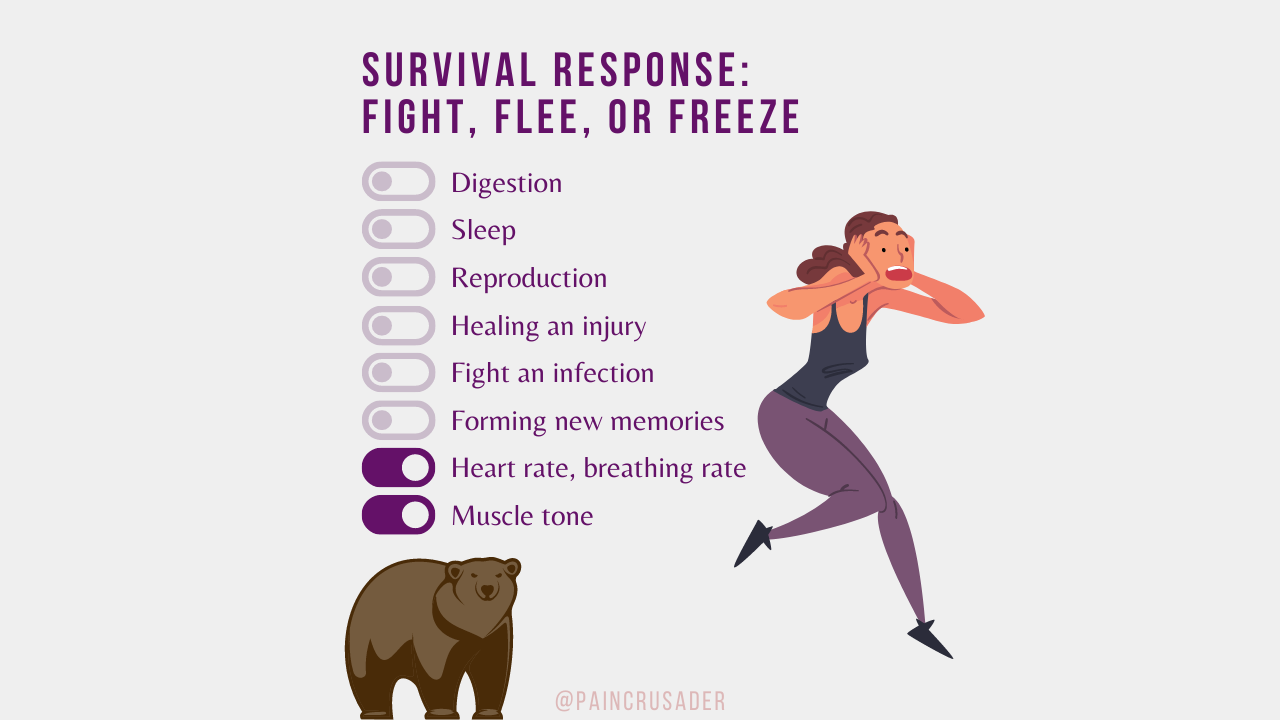What Do Chronic Pain Conditions Have in Common?

There are a group of particularly curious chronic pain conditions plaguing women around the globe.
And while these conditions do affect men, more than 80% are women.
But being female isn’t the only thing those battling mysterious chronic pain conditions have in common.
Before we get into that, let’s be more specific about what types of puzzling conditions we’re talking about here… conditions like:
-
Fibromyalgia
-
Chronic Fatigue Syndrome
-
Chronic Lyme Disease
-
Irritable Bowel Syndrome
-
Complex Regional Pain Syndrome (formerly RSD)
-
Gluten intolerance
-
Dystonia
-
Ehlers-Danlos Syndrome
-
Lupus
-
Rheumatoid Arthritis
-
Multiple Sclerosis
-
and many, many more!
These conditions, and many others not listed, are the ones that go overlooked and are looked down upon. Their hosts are viewed as crazy hypochondriacs, in need of psychological counseling.
While these conditions have often mistakenly been viewed as mental health conditions, the physical similarities they share are remarkable & indisputable.
In this post I will be discussing 7 symptoms that all chronic pain conditions have in common AND I will provide an explanation for why these mysterious conditions occur.

When looking the list of symptoms associated with each of those conditions, you'll very quickly see some recurring themes:
1. The Pain.
The first is quite obvious – these are “pain” conditions after all. There is always widespread, unpredictable pain. Often this pain is disproportionate to the extent of tissue damage or injury. The pain can travel, its spontaneous, and unresponsive to typical treatments that should help with pain.
2. Gut Dysfunction
This symptom is not as obvious as the first, because its one of the more embarrassing symptoms. However, ask any person with chronic pain about their digestive health, and if they're honest, you’ll likely find that there's form of dysfunction, whether its diarrhea, constipation, diarrhea AND constipation, ulcers, acid reflux, or food intolerance. Digestion is almost always affected.
3. Reproductive system dysfunction
Another common, yet often ignored & overlooked, issue relates the reproductive system. These symptoms can range from seemingly benign issues like lowered libido or dampened arousal to more troubling problems like endometriosis, ovarian cysts, and uterine fibroids.
4. Immune system suppression
Its striking how common autoimmune conditions are in conjunction with chronic pain conditions. However, not all people with chronic pain have autoimmune diseases. An autoimmune diagnosis may not be present, but imbalances in the messengers of the immune system that regulate inflammation (aka. cytokines) are often quite common in the the chronic pain population.
5. Brain fog
This symptom is difficult for many to describe but is undeniably a symptom that nearly all chronic pain sufferers have experienced. It involves problems with thinking & generally involves a feeling of being mentally fuzzy, which affects focus, concentration, problem solving, multitasking, & memory.
6. Fatigue
Everyone feels tired at some point. But this symptom of fatigue that chronic pain sufferers share is more than feeling tired. Fatigue is the feeling of severe exhaustion that doesn’t necessarily improve with more sleep or rest.
7. Sleep Dysfunction
Last but not least - sleep. Nearly all folks with chronic pain conditions struggle with sleep in some way, shape, or form. Whether its trouble falling asleep, staying asleep, insomnia, nightmares, or not feeling well rested - sleep dysfunction is a big problem, especially when you know that you need sleep to help your body feel better.
So, these mysterious chronic pain conditions have these 7 symptoms in common. (They actually have quite a lot more in common than what's listed here, but that’s a topic for another time).
Now, your next logical questions should be… if these conditions/diagnoses/syndromes are biologically so similar, what differentiates one from another?
In pain states, various systems are altered, including the endocrine system, sympathetic nervous system, the GI system, the motor system, and the immune system. The thing that makes each diagnosis/condition/syndrome unique is which one of those systems dominates.

For example, if you have symptoms in all of the categories listed above but diarrhea (and other GI-related symptoms) tends to be the most severe, disabling symptom, you’ll most likely end up with a diagnosis of IBS, or another gut-related diagnosis.
In fact, the diagnostic label given is often determined by the type of specialist you see first. If you see a rheumatologist first, you’re more likely to get a diagnosis of fibromyalgia (even though fibromyalgia is no longer considered a rheumatological condition but an immune system condition). See an endocrinologist first and you're more likely to be diagnosed with Chronic Lyme Disease.

The problem is, however, even when an accurate diagnosis is determined, these conditions still remain mysterious - with no known cure & the cause still not well understood.
However, when we view these conditions through the lens of neuroscience, they suddenly become less mysterious. Let me explain…
Imagine a hungry bear walks into the room. Suddenly, your main objective is to survive, by fighting, fleeing, or freezing.

Thankfully your sympathetic nervous system takes over & reallocates resources to the systems necessary for your survival:
-
Digesting dinner would be a waste of valuable resources, so during a fight or flight situation, digestion is limited.
-
Sleeping and reproduction would not be very helpful in that situation either so your body will make it very hard to do either one.
-
Fighting an infection or healing an injury is also a waste of resources, it’s better to save those resources to fight the bigger threat - the bear.
-
Forming new memories takes a lot of energy and resources as well so the system shut that off too.
The fight or flight response is incredibly well-designed to handle acute stressors, like bear attacks, but it’s not designed to run for long periods of time.
Yet, for individuals with these mysterious chronic pain conditions, it’s as if the body is responding to a bear all the time.
It’s saving resources to fight, flee, or freeze by shutting down digestion, memory & concentration, reproduction, & the immune system.
The body reacts as if there is a bear even when there’s no real threat at all. This reaction has to do with a hypersensitive nervous system.
With nervous system hypersensitivity, two things happen:
- the sympathetic nervous system takes over and
- changes occur in the central & peripheral nervous systems making it better at detecting & amplifying various stimuli.
What ends up happening is the person experiences pain in the absence of a threatening stimulus (aka. injury) along with the cluster of other unpleasant symptoms discussed above.
Unfortunately, traditional treatment methods don’t work long term for these conditions. In fact, sometimes those treatment methods themselves, like physical therapy exercises, can be interpreted as threatening by the body & can make the pain (and other symptoms) worse.
Ultimately, the best thing we can do is to work on strategies that force our parasympathetic nervous system (the system that regulates rest & digest) to kick in, even momentarily.
There are many ways to do this including breathing exercises, consistent routines, pacing, utilizing your own known protectors, graded exercise/activity/exposure, and specific nervous system re-wiring drills.
All of these techniques & drills are strategically packaged into my chronic pain program.
If you’d like to learn more pain neuroscience & various ways to easily & consistently practice nervous system supportive strategies/drills, check out my program, the Chronic Pain Breakup Method and book a discovery call to learn more.
Get Pain Articles & Neuroscience Nuggets Sent To Your Inbox.
Subscribe to my Blog!






